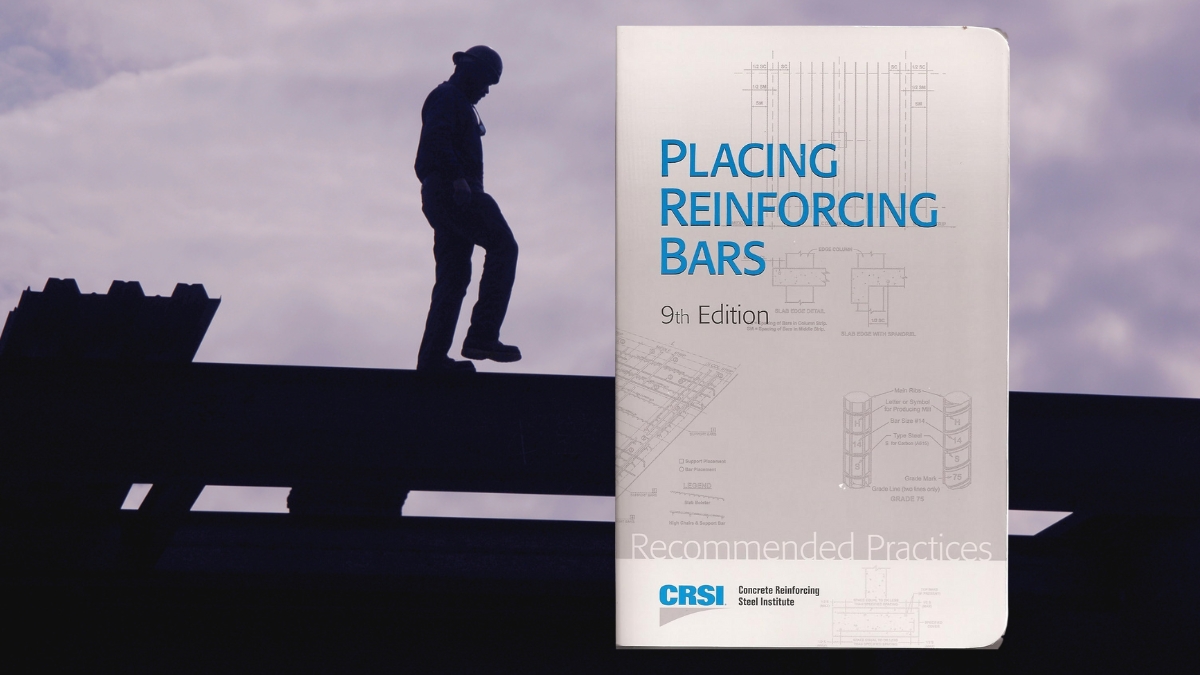If rebar could talk, it might just say, “Read the handbook first.” Concrete construction needs accuracy, and no one likes rework. That’s why professionals turn to the Placing Reinforcing Bars Handbook. It’s not just popular—it’s essential.
The 9th Edition packs decades of practical know-how into one handy volume. Published by the Concrete Reinforcing Steel Institute, this field guide helps ironworkers, inspectors, engineers, and students get things right from the start.
Need to check placement specs? Want to confirm splice methods or support spacing? This handbook covers it. Here’s what makes it stand out.
What Makes the Placing Reinforcing Bars Handbook So Useful
Updated Standards for Today’s Job Sites
This edition brings full updates that follow modern concrete reinforcement techniques. Details like beam bolster diagrams now reflect real job site layouts. It removes guesswork, giving workers a reliable layout guide for placing steel.
Better Material Coverage
The book includes updated data on specialty materials, such as ASTM A955 stainless steel and ASTM A1035 low-carbon chromium. This matters in structures exposed to moisture or chemical exposure. Use the right steel for the job with confidence.
You’ll also find info on ASTM A996 rail-and-axle steel. These updates help teams using new material types stay compliant and efficient.
Stronger Focus on Safety
Safety isn’t tucked into a side note—it runs through the whole handbook. Crane signal diagrams match current ASME standards. Tables showing nylon sling capacities are clearly laid out. Every recommendation supports safe lifting and placement procedures.
How to Place Rebar with Confidence
Bar placement needs precision. The rebar placement handbook shows proper spacing, tolerances, and bar tying and splicing methods. Diagrams show the right way to do snap ties, saddle ties, and figure-eight ties. The step-by-step layout makes it easy to double-check work in the field.
It breaks down how to place rebar in different structural elements—footings, columns, slabs, walls, and more. Bridge and highway projects also get coverage, showing special layout rules for transportation structures.
Practical Features that Matter on the Job
The reinforcing bar guide isn’t bulky. At about 8.8 x 6 inches, it fits easily in tool bags or glove compartments. Weighing just 1 pound, it’s made for daily field use.
It’s durable too. The pages resist smudges and wear. That matters on messy jobsites. The book’s layout lets workers find information fast—no digging through paragraphs.
With 288 pages of clear illustrations and updated technical data, it doubles as both a field tool and an office reference.
Real Use Cases for the Handbook
- Apprentices learn standard techniques the right way
- Experienced ironworkers use it to verify specs before placing steel
- Inspectors rely on it to ensure code compliance
- Project managers and engineers refer to it while writing specs
- Educators use it in construction management and civil engineering classes
This isn’t a theory. It’s hands-on guidance straight from the field.
Pricing and Availability
Here’s what you need to know. A brand-new copy on Amazon sells for $683.97 due to limited supply. That’s a steep price. But used copies are available between $94.41 and $179.93, often with free shipping.
Some construction firms share one copy across multiple teams. Others check with trade groups or schools for better deals. Still, most agree the value far outweighs the cost. One error in steel placement can cost thousands—this book helps prevent that.
What’s New in the 9th Edition
- Better illustrations for tie methods and bar supports
- Spiral tolerances for columns are now crystal clear
- Updated mechanical and welded splice data
- Improved safety guidance on hoisting and fall protection
- Aligned with the latest structural steel reinforcement codes
Every section reflects changes in industry codes and standards. You get the most current data available.
Final Thoughts
The Placing Reinforcing Bars Handbook is more than a reference. It’s a daily tool for staying accurate, safe, and code-compliant. Ironworkers, engineers, and inspectors keep it close for good reason.
Want to avoid costly mistakes? Want to get reinforcement right the first time? This handbook delivers.
You can grab your copy on Amazon today—new if you’re lucky or used if you want to save. Either way, it’s one of the smartest purchases you’ll make for reinforcement work.

Leave a Reply